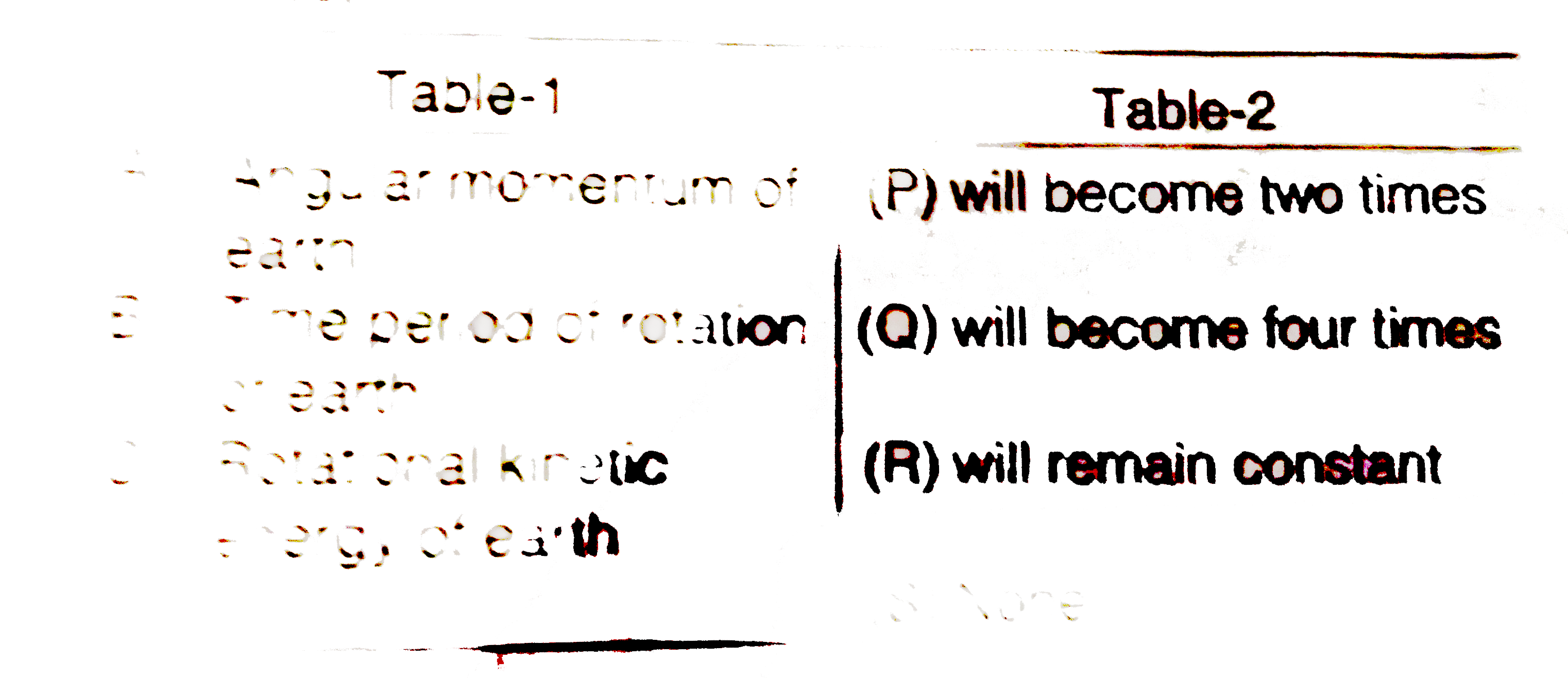If radius of the earth is doubled without change in its mass, what will be the length of the day?
To solve the problem of finding the new length of the day if the radius of the Earth is doubled while keeping its mass constant, we can follow these steps:
Step 1: Understand the relationship between radius and angular velocity
The Earth rotates about its axis, and the length of the day is determined by the time it takes for one complete rotation. The angular velocity (ω) of the Earth is related to the gravitational force and the radius of the Earth.
Step 2: Use the formula for gravitational force
The gravitational force (F) acting on an object at the surface of the Earth is given by:
F=G⋅MR2
where:
- G is the gravitational constant,
- M is the mass of the Earth,
- R is the radius of the Earth.
Step 3: Set up the condition for centripetal force
For an object to remain on the surface of the Earth, the gravitational force must provide the necessary centripetal force for circular motion:
F=m⋅v2R
where v is the tangential speed of the object.
Step 4: Relate tangential speed to angular velocity
The tangential speed v can be expressed in terms of angular velocity ω and radius R:
v=R⋅ω
Substituting this into the centripetal force equation gives:
G⋅MR2=m⋅(R⋅ω)2R
This simplifies to:
G⋅MR2=m⋅R⋅ω2
Step 5: Solve for angular velocity
Rearranging the equation to solve for ω:
ω2=G⋅Mm⋅R3
Thus, the angular velocity is inversely proportional to the radius.
Step 6: Determine the new angular velocity with doubled radius
If the radius is doubled (i.e., R′=2R), the new angular velocity ω′ can be expressed as:
ω′=√G⋅Mm⋅(2R)3=ω2√2
This indicates that the angular velocity decreases when the radius increases.
Step 7: Relate angular velocity to the length of the day
The length of the day (T) is related to angular velocity by:
T=2πω
If the angular velocity is halved, the new period T′ will be:
T′=2πω′=2πω2√2=2√2⋅T
Step 8: Calculate the new length of the day
Since the original length of the day (T) is 24 hours, the new length of the day will be:
T′=2√2⋅24 hours
Calculating this gives:
T′≈67.88 hours
Final Answer
If the radius of the Earth is doubled without change in its mass, the new length of the day will be approximately 67.88 hours.
---
The Earth rotates about its axis, and the length of the day is determined by the time it takes for one complete rotation. The angular velocity (ω) of the Earth is related to the gravitational force and the radius of the Earth.
The gravitational force (F) acting on an object at the surface of the Earth is given by:
F=G⋅MR2
where:
- G is the gravitational constant,
- M is the mass of the Earth,
- R is the radius of the Earth.
For an object to remain on the surface of the Earth, the gravitational force must provide the necessary centripetal force for circular motion:
F=m⋅v2R
where v is the tangential speed of the object.
The tangential speed v can be expressed in terms of angular velocity ω and radius R:
v=R⋅ω
Substituting this into the centripetal force equation gives:
G⋅MR2=m⋅(R⋅ω)2R
This simplifies to:
G⋅MR2=m⋅R⋅ω2
Rearranging the equation to solve for ω:
ω2=G⋅Mm⋅R3
Thus, the angular velocity is inversely proportional to the radius.
If the radius is doubled (i.e., R′=2R), the new angular velocity ω′ can be expressed as:
ω′=√G⋅Mm⋅(2R)3=ω2√2
This indicates that the angular velocity decreases when the radius increases.
The length of the day (T) is related to angular velocity by:
T=2πω
If the angular velocity is halved, the new period T′ will be:
T′=2πω′=2πω2√2=2√2⋅T
Since the original length of the day (T) is 24 hours, the new length of the day will be:
T′=2√2⋅24 hours
Calculating this gives:
T′≈67.88 hours
If the radius of the Earth is doubled without change in its mass, the new length of the day will be approximately 67.88 hours.
Topper's Solved these Questions
Similar Questions
Knowledge Check
- Question 1 - Select One
If radius of the earth is doubled without change in its mass, what will be the length of the day?
A1/2B2C4D1/8 - Question 2 - Select One
If Earth's mass is doubled without changing its size, your weight would
Aincrease because gravitational force increasesBdecrease because gravitational force increasesCincrease because gravitational force decreasesDnot change because you are still on Earth. - Question 3 - Select One
If radus of earth shrinks by 0.1% without change in its mass, the percentage change in the duration of one day
Adecreases by 0.1%Bincreases by 0.1%Cdecreases by 0.2%Dincreases by 0.2%
If radius of the earth contracts to half of its present value without change in its mass, what will be the new duration of the day?
View SolutionIf the radius of the earth contracts to half of its present value without change in its mass, what will be the new duration of the day?
View SolutionIf the radius of the earth shrinks by "25%" without change in its mass,the time duration of one day will be "
View SolutionIf the radius of the earth decreases by 1% without changing its mass, will the acceleration dure to gravity at the surface of the earth increase or decrease? If so, by what per cent?
View SolutionIf the earth expands suddenly to twice its diamteter, what would be the length of the day ?
View Solution


